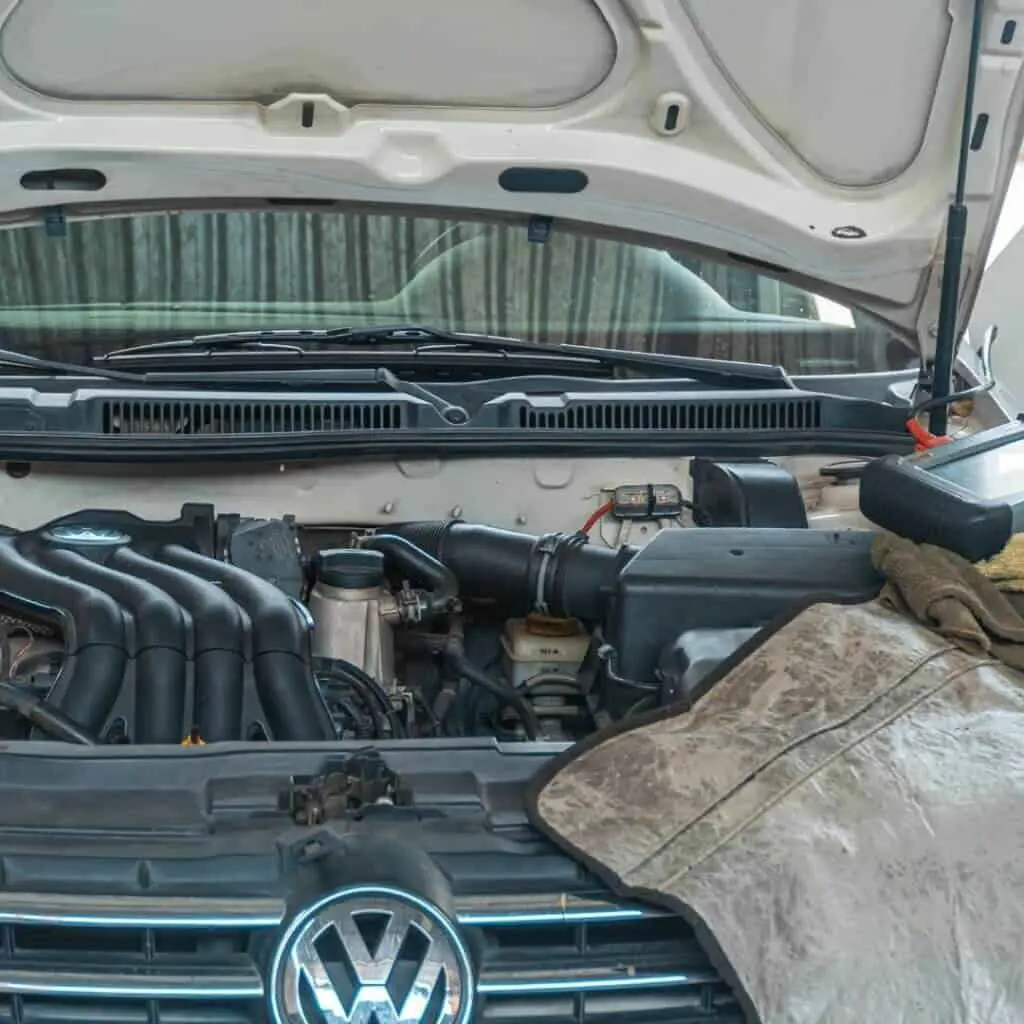What are the most common Ford Kuga problems?
Ford has been producing the Kuga, a C-segment compact crossover SUV, since 2008, primarily for the European market. It is currently in its third generation. The third-generation Kuga is built on Ford’s C2 platform; thus it shares its reinforcements with the Focus hatchback.
Compared to competitors like the Toyota RAV4, Honda CR-V, and Hyundai Tucson, the Kuga’s ride and handling are its distinguishing features. Ford has updated the Kuga’s engine lineup, dropping diesel power in favor of a 1.5 Eco Boost gasoline engine with 148 horsepower.
The hybrid and plug-in hybrid Ford Kuga models use a CVT auto box, while the 1.5 Eco Boost engine is only paired with a six-speed manual. Despite its rather blobby design, the Kuga is extremely rounded. It is well-equipped and feels much more mature inside.
Throughout its lifespan, the Kuga has been the subject of numerous recalls. Ford SA issued a third safety recall on August 2017. The recall addressed a potential fire risk posed by the insulation material installed near the SUV’s front seatbelts, which could catch fire in the event of a crash [1].
In response to numerous reports of its utility vehicles catching fire, Ford recalled 4,556 Kuga 1.6-liter Eco Boost models manufactured between December 2012 and February 2014. Several other recalls have been made for different model years. The Kuga 2020 has received a total of 7 different recalls [2].
Most Common Ford Kuga Problems

- Battery Drain
Despite having a fully charged battery, several Kuga owners have claimed that it drains completely the next day and the vehicle needs to be jumpstarted.
A Ford Kuga 64 Reg Diesel owner complained that the battery kept draining and that they had to use the manual key and jump-start the car as often as once a week. The garage suggested replacing the battery and possibly the Bluetooth module that was draining the battery.
The owner renewed the module and purchased a new battery. However, after a brief period, the battery began to deplete once more. The vehicle was returned to the garage, but no solution was found.
Slow engine crank, no start, dim lights, flickering dashboard lights, and clicking noises when trying to start the engine are the most common signs of a dead battery in Ford Kuga. Internal battery degradation as a result of aging and a defective alternator are the most common causes of dead batteries in Kuga cars.
Dead batteries can also be brought on by parasitic draw and prolonged parking [3]. This can be easily fixed by replacing the battery in fuel-powered models, which you may be able to do yourself.
- Exhaust Problems
The exhaust of the Kuga has been associated with strange noises. Some of the symptoms experienced with the Kuga exhaust include blue exhaust smoke, poor engine performance, increased fuel consumption, and rough idle.
The EGR valve may be defective in this instance, causing all of the gases to escape rather than move through the engine [4]. A damaged or clogged diesel particulate filter (DPF) is another possibility. Black smoke coming from the exhaust pipe, low fuel economy, and problems starting the Ford Kuga are all signs of a dirty DPF filter.
To fix this issue, you might need to change the valves or channel. If the blocked DPF can’t clear itself through ‘recovery’, it should be diagnosed by an expert. It can be cleaned using what is called “forced regeneration” in some garages.
- Clutch Issues
A burning clutch is one of the most common issues with Ford Kuga models. A worn-out clutch has also been experienced with some Kuga models. In one case the car had only 30,000 miles on it.
It becomes difficult to shift between gears as the clutch wears out. The smooth transition between gears is replaced by a more abrupt one. Additionally, the clutch pedal will begin to move the vehicle up and up as the wear on your clutch increases.
Sometimes the clutch pedal has been found to stick down or halfway. Owners facing this issue are forced to use their feet to lift the clutch back in position. In one instance, the problem happened 100 miles after the car came from servicing.
If the clutch pedal remains on the floor, you may have binding issues with the release bearing or linkage. In this instance, make sure the linkage’s springs aren’t stretched too much; they might need to be adjusted.
You might also want to check the pedal stop’s position and the release bearing [5]. You need to get the clutch checked as soon as possible if there is a strong smell of burning from the clutch and a loud banging sound. Most of the time, a broken clutch pressure plate is to blame.
Take your vehicle to a garage to sort out the clutch issues. The mechanic should be informed of any clutch failure symptoms you observe.
- Greasy Windscreen
A greasy windscreen is a much less serious problem, but it still could be dangerous. Due to defective wiper blades, Kuga’s windscreen has occasionally been observed to be greasy.
An owner who was experiencing the issue argued that no matter how thoroughly they cleaned the windscreen, the smearing persisted. The driver replaced the wipers, but the screen was still smearing, albeit less so.
They tried wiping the glass with white spirits, which made a big difference, but even though the wiper removes the water, the glass still smears. Although the smears vanish in a matter of seconds, they remain unsightly in the rain because they continue to spread.
You will need to replace the glass and blade if cleaning them does not appear to be working. Under warranty, you may be able to replace the blades. They are very simple to modify if you need to replace them on your own.
Related: Ford Bronco Problems
- Engine Problems
Several complaints have been made concerning the Kuga engine. An owner of the Ford Kuga 2.0 TDCI Titanium complained that the brand-new car couldn’t start and run as expected. The driver did everything as explained in the owner’s manual, to no avail.
The car started when the temperature went back to normal. The Kuga engine has also been associated with power loss. After a full diagnosis of the issue, the mechanic found a problem with the injector.
Similarly, problems have been experienced when the motor is running idle. A shaking sound is heard and the idle fire-ups are not consistent. The fuel injectors are likely the cause of this issue [6].
Numerous problems with overheating have also been reported in the past, sometimes resulting in engine failure. Coolant leaks or cracked cylinder heads, for instance, could be the cause. The heat may crack the oil sump, allowing oil to leak.
Before doing anything major, it is best to have a professional diagnose the problem. Take the vehicle to the nearest Ford dealer or garage for a diagnosis if you encounter similar issues.
Read Also: Ford Edge Problems
Conclusion
The Ford Kuga is one of the most famous vehicle models around the world. However, problems with the Kuga are well-documented, and popularity does not make them infallible. Although regular car maintenance is always essential, the Ford Kuga is susceptible to a few issues.
Clutch issues, greasy windscreen, battery drains, exhaust, and engine problems are the most common issues with the Ford Kuga.
Additionally, in case of a front crash, the Kuga cars have been identified as having a potential risk for a B-pillar fire. The insulation material surrounding the seatbelt pre-tensioner may catch fire if the pre-tensioner is activated.
Even though the Ford Kuga has a lot of problems, it’s still a good car that people love. Keep these problems in mind because you might one day find yourself behind the wheel of a Kuga. Don’t worry if you see any of them, though, because most can be fixed with regular car maintenance.
Read Next: Ford Maverick Problems




